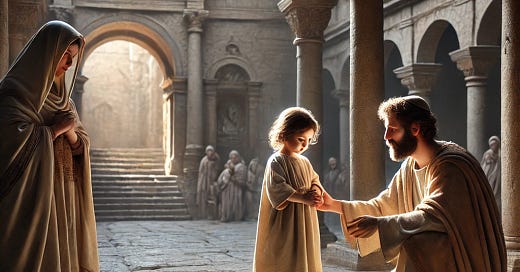The Protoevangelium of James, an apocryphal text dated to the mid-second century, offers a fascinating glimpse into the devotional life and theological imagination of the early Church. Though not part of the canonical Scriptures, this document profoundly shaped Christian piety, particularly regarding Mary, the Mother of Jesus.
Historical Context and Content
Attributed to James, traditionally understood as a brother or close relative of Jesus, the Protoevangelium of James expands upon the Nativity narratives found in the Gospels of Matthew and Luke. It seeks to fill in the gaps about the early life of Mary and the birth of Jesus, offering detailed accounts that blend theological reflection with popular devotion.
The text is divided into three main sections:
The Birth and Childhood of Mary: This section highlights Mary’s miraculous conception by her elderly parents, Joachim and Anna, drawing parallels to the births of Isaac and Samuel in the Hebrew Scriptures. Mary is presented as a consecrated virgin raised in the Temple, emphasizing her purity and divine election.
The Betrothal of Mary to Joseph: The narrative explains how Mary, under the care of the Temple priests, is entrusted to Joseph, a widower chosen by divine sign. This arrangement underscores her continued virginity even within marriage.
The Birth of Jesus: The Protoevangelium elaborates on the Nativity story, introducing the midwife Salome, who testifies to Mary’s virginity after childbirth. This reinforces the doctrine of the perpetual virginity of Mary, a key theme in early Christian theology.
Theological and Devotional Significance
Although the Protoevangelium of James is not canonical, it has had a lasting impact on Christian thought and practice:
Mary’s Role in Salvation History: By portraying Mary as uniquely prepared and chosen for her role as Theotokos (God-bearer), the text elevates her importance in the unfolding of God’s redemptive plan. This emphasis laid the groundwork for later Marian doctrines such as the Immaculate Conception.
The Sanctity of Family Life: The text’s focus on the holy lineage and virtuous lives of Joachim, Anna, and Mary presents an ideal of family life rooted in faith and obedience to God.
Liturgical Influence: Many feasts in the Christian liturgical calendar, such as the Nativity of Mary and the Presentation of Mary, find their origins or inspiration in the Protoevangelium’s narratives.
Controversy and Reception
The Protoevangelium of James has been both celebrated and criticized throughout Christian history. Early Church fathers like Origen acknowledged its popularity but warned against using it as a source of doctrine. The text was ultimately excluded from the biblical canon, primarily due to questions about its authorship and historical reliability.
However, its influence persisted in Christian art, literature, and theology. Iconography depicting scenes from the Protoevangelium, such as the Presentation of Mary in the Temple, became staples of Christian artistic tradition.
Modern Reflections
For contemporary Christians, the Protoevangelium of James offers a rich tapestry of theological insight and devotional inspiration. While not Scripture, it invites readers to meditate on the mysteries of God’s incarnation and the profound role of Mary in salvation history. Its stories challenge believers to embrace lives of holiness, faith, and trust in God’s providence.
In a world often marked by skepticism and secularism, the Protoevangelium of James stands as a testament to the enduring power of faith-filled storytelling. It reminds us that beyond the historical facts lies a deeper truth—the reality of a God who enters into human history, sanctifying it through His love and grace.
Conclusion
The Protoevangelium of James, though outside the bounds of the canon, remains a valuable treasure of Christian tradition. It reflects the devotional heart of the early Church, illuminating how believers sought to honor Mary and celebrate the miraculous birth of Christ. For modern readers, it serves as both a historical artifact and a spiritual resource, pointing us toward the mystery of the Incarnation and the faith of those who prepared the way for the coming of the Savior.





